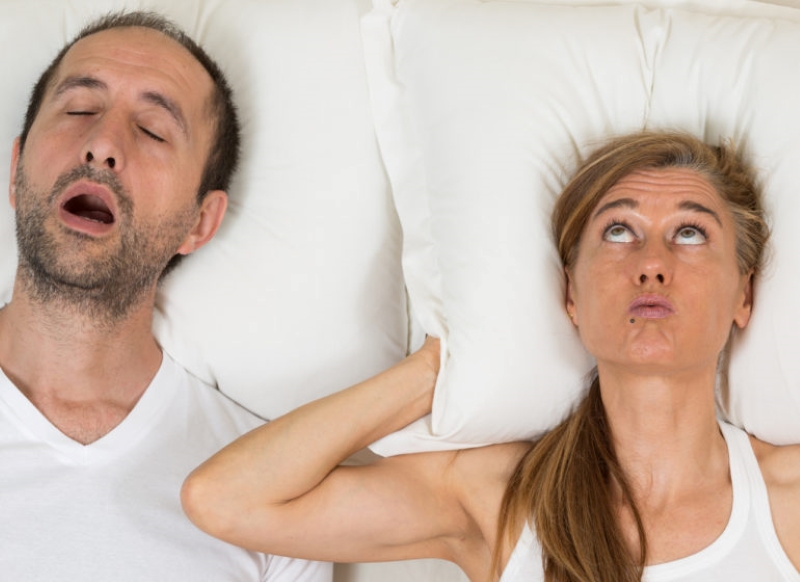
Polysomnography: understanding and solving sleep apnoea problems
Let’s talk about polysomnography and sleep apnoea: people who suffer from sleep disorders are diverse, with estimates indicating around 9 million Italians who do not sleep properly
A large proportion of these disorders are caused by breathing problems during the hours of rest at night.
There are many people who breathe poorly during the night, but do not know it.
One of the most common disorders is sleep apnoea, an interruption of the respiratory flow that can vary in duration, but can be as long as several seconds, until the sufferer almost gasps for breath but does not wake up.
This disorder, as trivial as it may seem, can go as far as to create serious discomfort, especially in children.
But as we were saying, it is difficult to detect the disorder on one’s own, and a diagnosis requires polysomnography, a test to verify the presence of sleep apnoea.
What are sleep apnoeas and how do they manifest themselves?
Sleep apnoea is literally the interruption of the correct phases of breathing, meaning that the patient suffering from it stops breathing for a few seconds, freezes, and then catches his or her breath, often wheezing, but always without waking up, or rarely waking up, but not realising it is because of the disorder.
Sleep apnoea syndrome can become very insidious to one’s health and immediate action must be taken if one discovers that one is suffering from it.
As mentioned, it is not easy to realise that you have apnoea during sleep, precisely because you are asleep.
It is very often the case that it is the partner who realises, and then a series of diagnoses are initiated to verify the presence of apneas.
Symptoms of sleep apnoea
The main noticeable symptom of sleep apnoea in adults is fatigue, lack of concentration and daytime sleepiness.
These symptoms are due to the fact that one rests poorly and insufficiently during the night hours, so one is sleepy during the day.
In children, on the other hand, symptoms of hyperactivity, irritability, sleepiness, and in both adults and children, irritability can be noted.
From these symptoms, however, it is difficult to draw the conclusion that we are dealing with sleep apnoea, and it is therefore necessary to associate them with others that will form a more detailed picture.
These include snoring: sleep apnoea sufferers usually snore, but this symptom alone is not sufficient for a diagnosis.
However, if all these symptoms create a suspicion, one can turn to one’s general practitioner who will prescribe specialist examinations.
Usually a pulmonologist, an ENT specialist or a test at a sleep centre will diagnose the problem.
Among the main causes of sleep apnoea are dietary, genetic and environmental factors – let’s see the details.
What are the real causes of sleep apnoea?
Apneas are not all the same.
There are two types of apneas, obstructive and central sleep apneas.
The most common apneas are obstructive apneas and as can be easily inferred, these are apneas that are caused by an obstruction.
There are different types of obstruction, from tonsils and adenoids, especially in children, to a deviation of the nasal septum, excessive relaxation of the oropharyngeal muscles, and excessive fatty tissue in the trachea.
Factors also include ageing and a certain cranial conformation.
Central sleep apnoea, on the other hand, is caused by the brain not sending correct impulses to the muscles that control breathing.
How to treat sleep apnoea
The first thing to do is to have a correct diagnosis.
One can undergo polysomnography, a diagnostic test that is used to monitor the patient’s sleep through electrodes.
After diagnosis, treatment
Once the examination has been carried out, which in some cases can also consist of simple nocturnal monitoring with a saturimeter, the treating doctor will arrange the most suitable therapy depending on the case.
If the sleep apnoea is caused by excessive weight and incorrect nutrition, one should follow a specific diet and exercise according to one’s possibilities.
If the apneas are caused by obstruction, surgery must be performed to remove the tonsils or adenoids, in some cases both.
This is particularly recommended in children who, once operated on, not only recover effective sleep, but also manage to improve their attentional skills.
There are also breathing aids that can be prescribed by the treating physician.
Read Also
Emergency Live Even More…Live: Download The New Free App Of Your Newspaper For IOS And Android
Pediatric Obstructive Sleep Apnea
Kids With Sleep Apnea Into Teen Years Could Develop High Blood Pressure
Obstructive Sleep Apnoea: Symptoms And Treatment For Obstructive Sleep Apnoea
Obstructive Sleep Apnoea: What It Is And How To Treat It
Grinding Your Teeth While You Sleep: Symptoms And Remedies For Bruxism
Long Covid And Insomnia: ‘Sleep Disturbances And Fatigue After Infection’
Sleep Disorders: The Signs Not To Be Underestimated
Sleepwalking: What It Is, What Symptoms It Has And How To Treat It
What Are The Causes Of Sleepwalking?
Catatonia: Meaning, Definition, Causes, Synonyms And Cures
Teenagers And Sleep Disorders: When To Consult A Specialist?
Sleep Apnea: Causes And Remedies
Polysomnography, The Test To Diagnose Sleep Disorders
Paediatrics, What Is PANDAS? Causes, Characteristics, Diagnosis And Treatment
Pain Management In The Paediatric Patient: How To Approach The Injured Or Aching Children?
Sleep Apnoea: What Are The Risks If Left Untreated?


